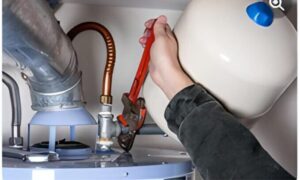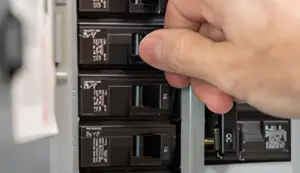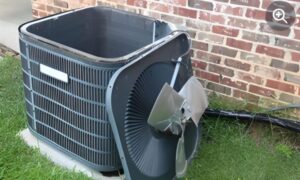When it comes to HVAC design, even the most seemingly insignificant mistakes can have a significant impact on the overall comfort and efficiency of a space. From drafty conditions to inadequate ventilation, these errors can lead to a myriad of issues that compromise the quality of your indoor environment.
But what are the most common mistakes that individuals make when it comes to HVAC design? And how can these mistakes sabotage your comfort? In this discussion, we will uncover some of the key design errors that can wreak havoc on your HVAC system, leaving you longing for a more comfortable and efficient space.
So, let's explore the world of HVAC design mistakes and discover if you may inadvertently be sabotaging your own comfort.
Consequences of Poor HVAC Design
Poor HVAC design can have significant consequences on the functionality, efficiency, and overall performance of a heating, ventilation, and air conditioning system.
Improper air flow caused by design mistakes can result in drafty conditions, poor ventilation, stuffy air, lingering odors, and inconsistent temperatures in the space. These design errors cause HVAC systems to run longer and work harder, leading to increased repair issues, shorter equipment life, and higher energy bills.
Inadequate ductwork sizing and design mistakes lead to the accumulation of dust, contaminants, and mold growth in ducts, resulting in poor indoor air quality and health concerns.
To avoid these consequences, proper planning during the design phase of the project is essential. Prioritizing indoor air quality and regularly cleaning the ducts are crucial steps in maintaining a healthy environment.
Incorrect Ductwork Sizing
Improper ductwork sizing is a common HVAC installation mistake that can have detrimental effects on the functionality and efficiency of the system. HVAC design professionals must carefully consider the type of air conditioning system being used during the design process, such as VRF systems. Detailed load calculations are necessary to determine the correct ductwork sizing for spaces with varying heating and cooling needs.
Different HVAC systems, such as heat pump systems and air purifiers, require specific ductwork sizing. Additionally, proper location planning for equipment is crucial for determining ductwork sizing and layout. Poorly sized ductwork can result in restricted airflow, increased energy consumption, and decreased comfort levels.
It is essential to involve knowledgeable HVAC professionals early in the design process to ensure accurate duct sizing and avoid this common mistake.
Poor Ductwork Layout
An essential aspect of HVAC design is ensuring a well-planned and strategically laid out ductwork system that maximizes energy efficiency and promotes consistent airflow throughout the space.
Poor ductwork layout is a common HVAC design mistake that can compromise the performance of the system. This mistake often results from poorly-located equipment and a lack of involvement from knowledgeable HVAC design professionals.
A proper ductwork layout includes centrally located equipment, correct sizing, and installation in internal walls and ceilings. HVAC professionals work closely with architects and contractors to ensure that the duct layout aligns with the design and usage of the space.
Leaky Ducts
A critical issue that can compromise the overall efficiency and performance of an HVAC system is the presence of leaky ducts. Leaky ducts allow conditioned air to escape, leading to inefficient cooling and wasted energy. These air leaks are often caused by incorrect sealing or improper support of the ducts.
To prevent up to 20% of conditioned air from being wasted, it is important to properly seal the ducts using mastic gum or metal-backed tape. When it comes to duct material options, flexible ductwork made from reinforced plastic is less durable, while duct board made from pressed fiberglass is more energy efficient and reduces noise. Consulting an HVAC expert can help determine the appropriate duct materials for specific needs.
Ensuring that ducts are properly sealed and supported is crucial for maintaining energy efficiency and optimizing HVAC system performance.
Insufficient Returns
Insufficient return vents can significantly impact the airflow and air balance within a space, leading to discomfort and suboptimal performance of the HVAC system. To understand the consequences of insufficient returns, consider the following:
- Poor air flow: Insufficient return vents restrict the amount of air that can be pulled back into the HVAC system, resulting in reduced air flow throughout the space. This can lead to areas with stagnant or stuffy air.
- Unbalanced air pressure: Inadequate return vents can cause an imbalance in air pressure, leading to doors slamming or being difficult to open and close. This can create an uncomfortable and disruptive environment.
- Inefficient HVAC system: Insufficient returns force the HVAC system to work harder to maintain the desired temperature, resulting in decreased energy efficiency and higher utility bills.
- Discomfort: Without enough return vents, the HVAC system may struggle to properly distribute conditioned air, resulting in inconsistent temperatures and discomfort for occupants.
To ensure optimal performance and comfort, it is essential to include an adequate number of return vents in the HVAC design, considering the size and usage of the space.
Neglecting Maintenance
Improper maintenance of HVAC systems can have detrimental effects on their efficiency and longevity, leading to increased repair issues and decreased performance.
Regular preventative maintenance is crucial for keeping HVAC systems running efficiently and preventing breakdowns. Depending on the size and usage of the space, HVAC systems require maintenance 2 to 4 times per year.
Neglecting maintenance can result in decreased efficiency, increased repair issues, and shortened equipment lifespan. Preventative maintenance keeps equipment in good condition and ensures optimal performance.
Prioritizing air conditioning maintenance helps avoid costly repairs and maintain the longevity of the HVAC system. It is essential to schedule regular maintenance with qualified professionals to address potential issues, clean and replace filters, inspect and lubricate components, and optimize system performance.
Importance of Indoor Air Quality
Indoor air quality plays a vital role in maintaining a healthy and comfortable environment within a space, making it a crucial consideration in HVAC design and maintenance.
Here are four key reasons why indoor air quality is important:
- Health and well-being: Poor indoor air quality can lead to various health issues such as allergies, asthma, respiratory problems, and even more serious conditions. By ensuring good indoor air quality, occupants can breathe clean and fresh air, promoting their overall well-being.
- Comfort and productivity: Clean and fresh air enhances comfort levels and promotes productivity. Proper HVAC design and maintenance help regulate temperature, humidity, and ventilation, creating a pleasant and productive indoor environment.
- Energy efficiency: A well-designed HVAC system with proper air filtration and ventilation can help improve energy efficiency by reducing the load on the system and optimizing its performance. This, in turn, reduces energy consumption and lowers utility bills.
- Longevity of equipment: Good indoor air quality protects HVAC equipment from dust, debris, and contaminants, preventing unnecessary wear and tear. This extends the lifespan of the equipment and reduces the need for frequent repairs or replacements.
Frequently Asked Questions
How Can HVAC Design Mistakes Impact Indoor Air Quality?
Incorrect HVAC design mistakes, such as improper ductwork sizing, poor ductwork layout, leaky ducts, and insufficient returns, can negatively impact indoor air quality by causing poor ventilation, accumulating dust and contaminants, and compromising air balance and pressure.
What Are the Signs That Indicate Incorrect Ductwork Sizing?
Signs of incorrect ductwork sizing include inconsistent temperatures, poor airflow, excessive noise, and increased energy bills. These issues can indicate that the HVAC system is running longer and working harder due to design mistakes.
How Can Poor Ductwork Layout Affect Energy Efficiency?
Poor ductwork layout can negatively impact energy efficiency by causing restricted airflow, inadequate distribution of conditioned air, and increased pressure drop. This leads to longer running times for the HVAC system and higher energy consumption, resulting in reduced overall efficiency.
What Are Some Common Causes of Leaky Ducts?
Some common causes of leaky ducts include incorrect sealing methods, improper support of ducts, and the use of inadequate duct materials. Consulting an HVAC expert can help determine the right sealing techniques and materials to prevent energy waste and ensure efficient cooling.
What Are the Consequences of Neglecting HVAC Maintenance?
Neglecting HVAC maintenance can result in decreased efficiency, increased repair issues, and shortened equipment lifespan. Regular preventative maintenance, performed 2 to 4 times per year, is crucial for optimal performance, avoiding costly repairs, and maintaining system longevity.
Conclusion
In conclusion, it is crucial to avoid common HVAC design mistakes in order to maintain optimal comfort, energy efficiency, and indoor air quality.
Poorly designed HVAC systems can lead to various issues such as drafty conditions, inadequate ventilation, inconsistent temperatures, and compromised air quality.
Incorrect ductwork sizing, poor ductwork layout, leaky ducts, insufficient returns, and neglecting maintenance can all contribute to these problems.
By understanding and addressing these mistakes, individuals can ensure the proper functioning of their HVAC systems and avoid costly repairs and decreased efficiency.








